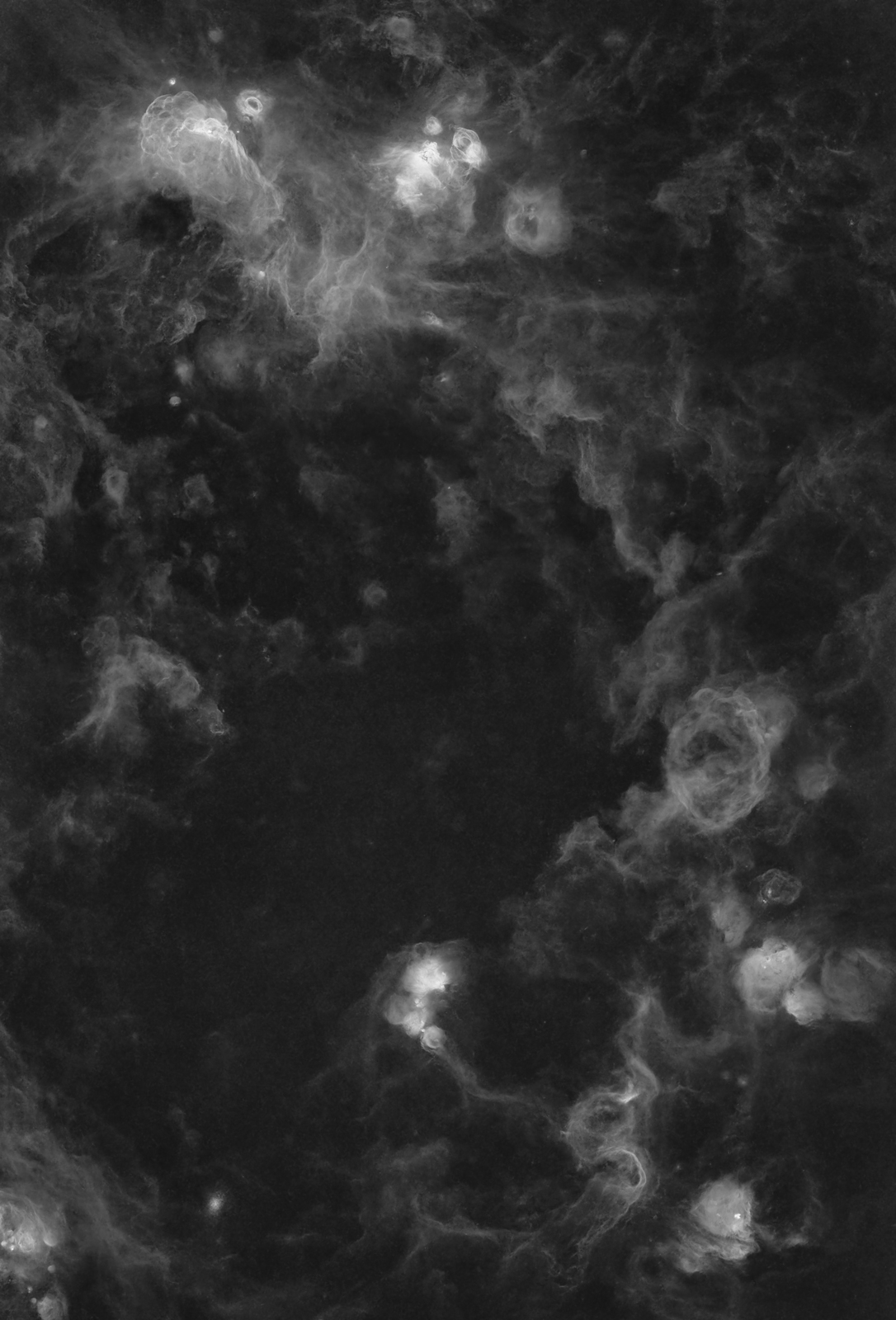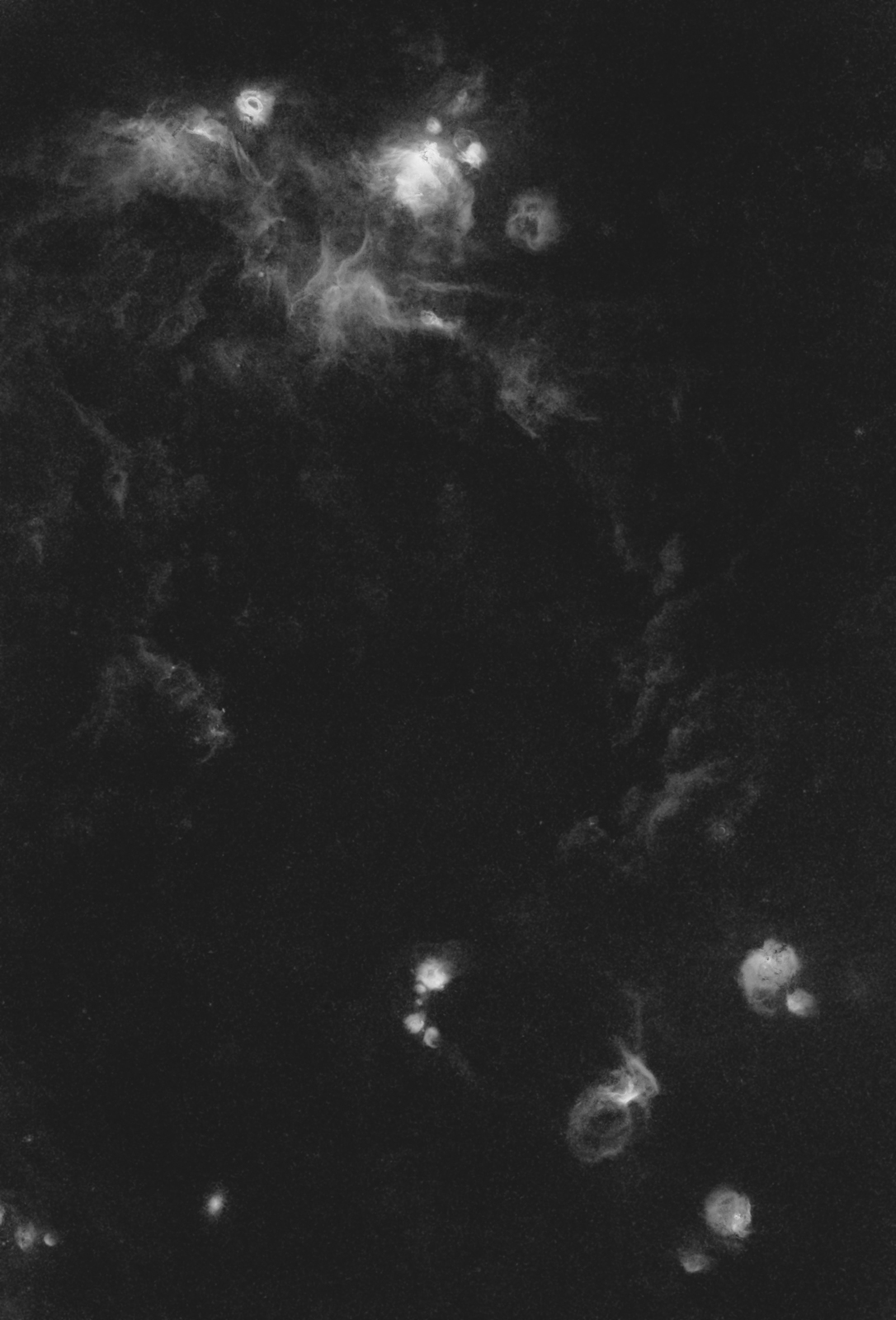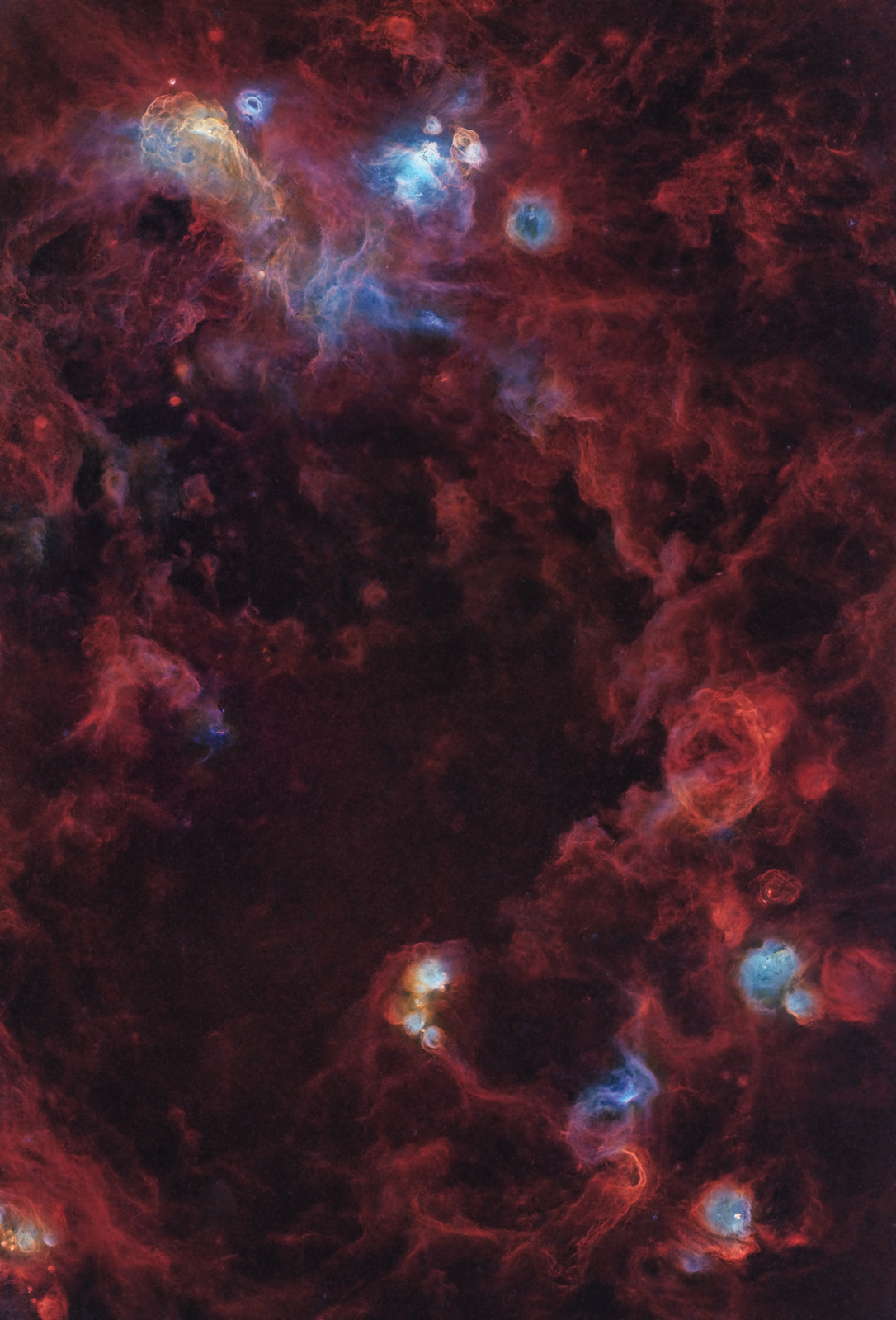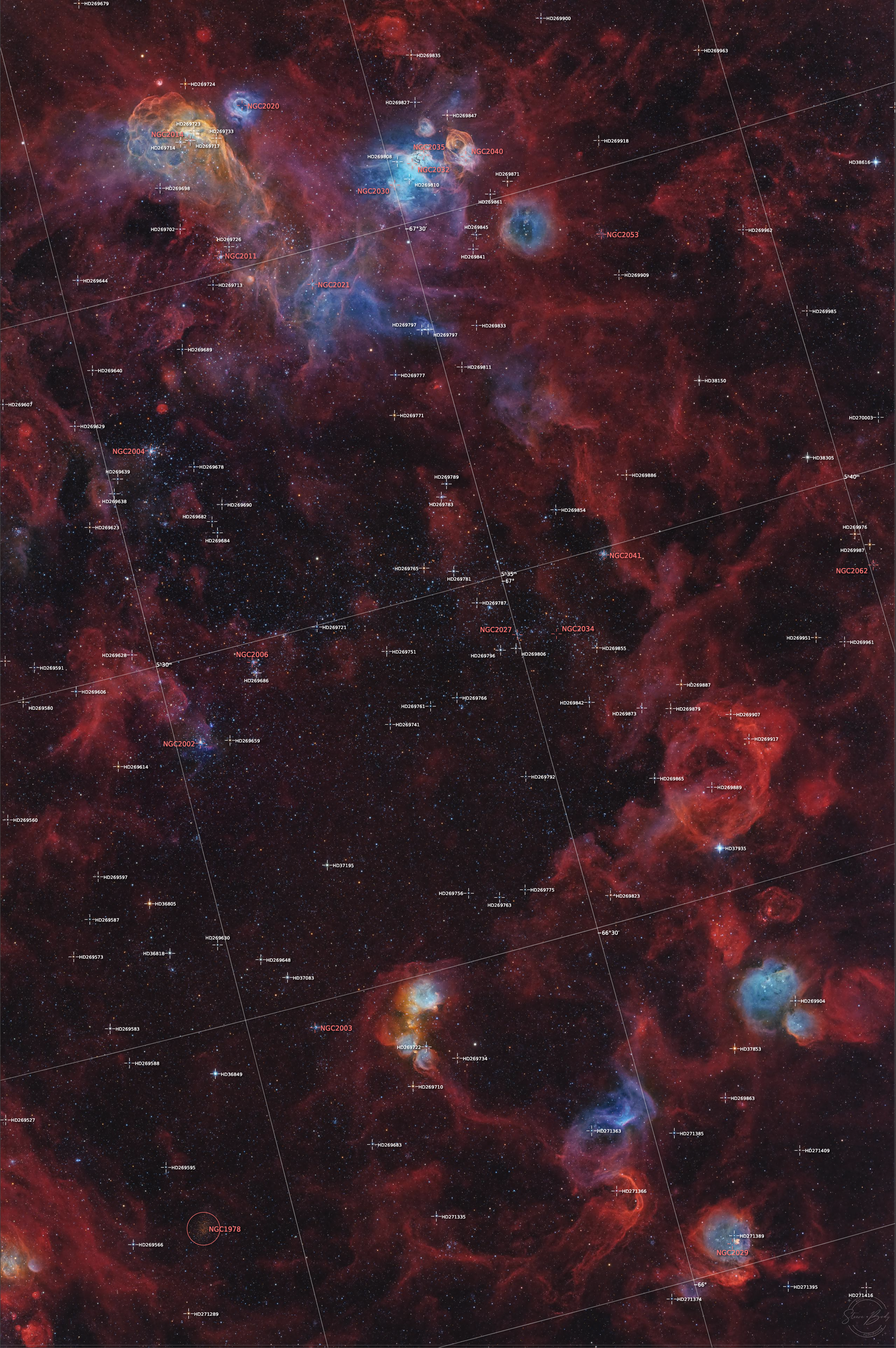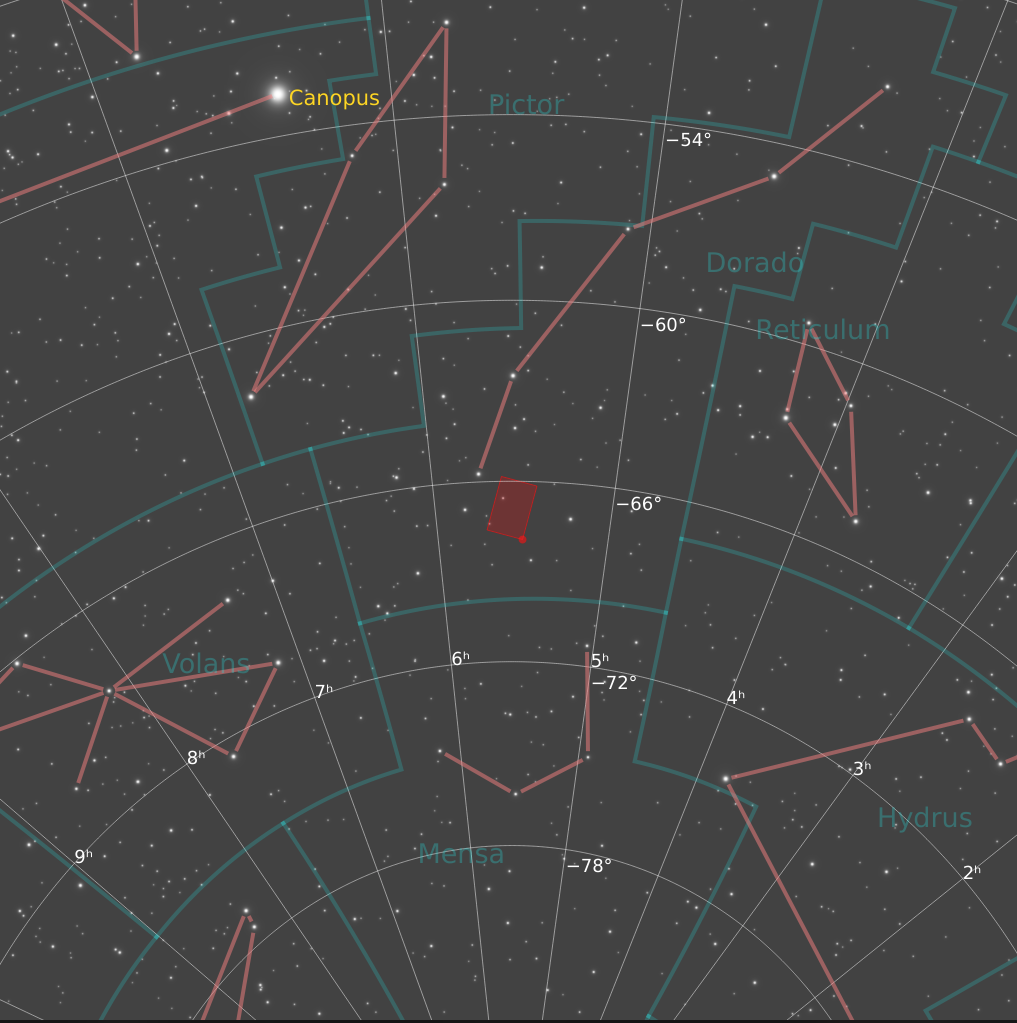I’m excited to present a high-resolution, 2-panel mosaic capturing the awe-inspiring Cosmic Reef and its neighbouring celestial bodies in the Large Magellanic Cloud. This detailed image, boasting an original resolution of 8448 x 12735, offers a unique perspective on some of the most spectacular nebulae and star clusters located in the Dorado constellation, approximately 163,000 light-years from Earth.
Innovative Imaging Technique:
The image processing technique used is SHO + HOO with RGB stars, designed to highlight the distinct emissions in the nebulae:
- Ha (Hydrogen-alpha) = Red
- Ha + Oiii (Oxygen-III) = Purple
- Ha + Sii (Sulfur-II) = Gold
- Oiii = Blue/Cyan
These colour mappings are carefully chosen to showcase the diverse and rich emissions from these celestial objects, providing a vivid and dynamic view of the interstellar medium.
The Cosmic Reef: NGC 2014 and NGC 2020
Prominently featured at the top left corner of the image is the Cosmic Reef, composed of NGC 2014 and NGC 2020. NGC 2014, resembling a vibrant coral, is a massive star-forming region lit up by young, massive Wolf-Rayet stars. Its rich red and orange hues, with tints of gold, are predominantly due to glowing hydrogen, nitrogen, and sulfur gases. In contrast, NGC 2020 radiates a striking blue and purple glow, predominantly due to oxygen, along with a significant presence of hydrogen, illustrating the effects of stellar winds from a massive central star.
Surrounding Nebulae and Star Clusters:
Encircling the Cosmic Reef are the nebulae NGC 2030, 2032, 2040, and 2029, each a hive of star formation and illuminated brilliantly by their internal stellar constituents. These regions add incredible depth and contrast to the overall landscape of the image.
At the bottom of the frame lies NGC 2029, a lesser-known but captivating object in the Large Magellanic Cloud, adding to the diversity of this cosmic vista.
Complementing these nebulae are several star clusters, including NGC 2004, 2003, 2006, 2002, 2041, 2047, 2034, 1978, and 2053. These clusters range from young groups radiating bright blue light to older clusters adorned with evolved red and yellow stars. Notably, NGC 2004 is luminous with massive stars, while NGC 1978 is distinguished by its older, evolved star population.


